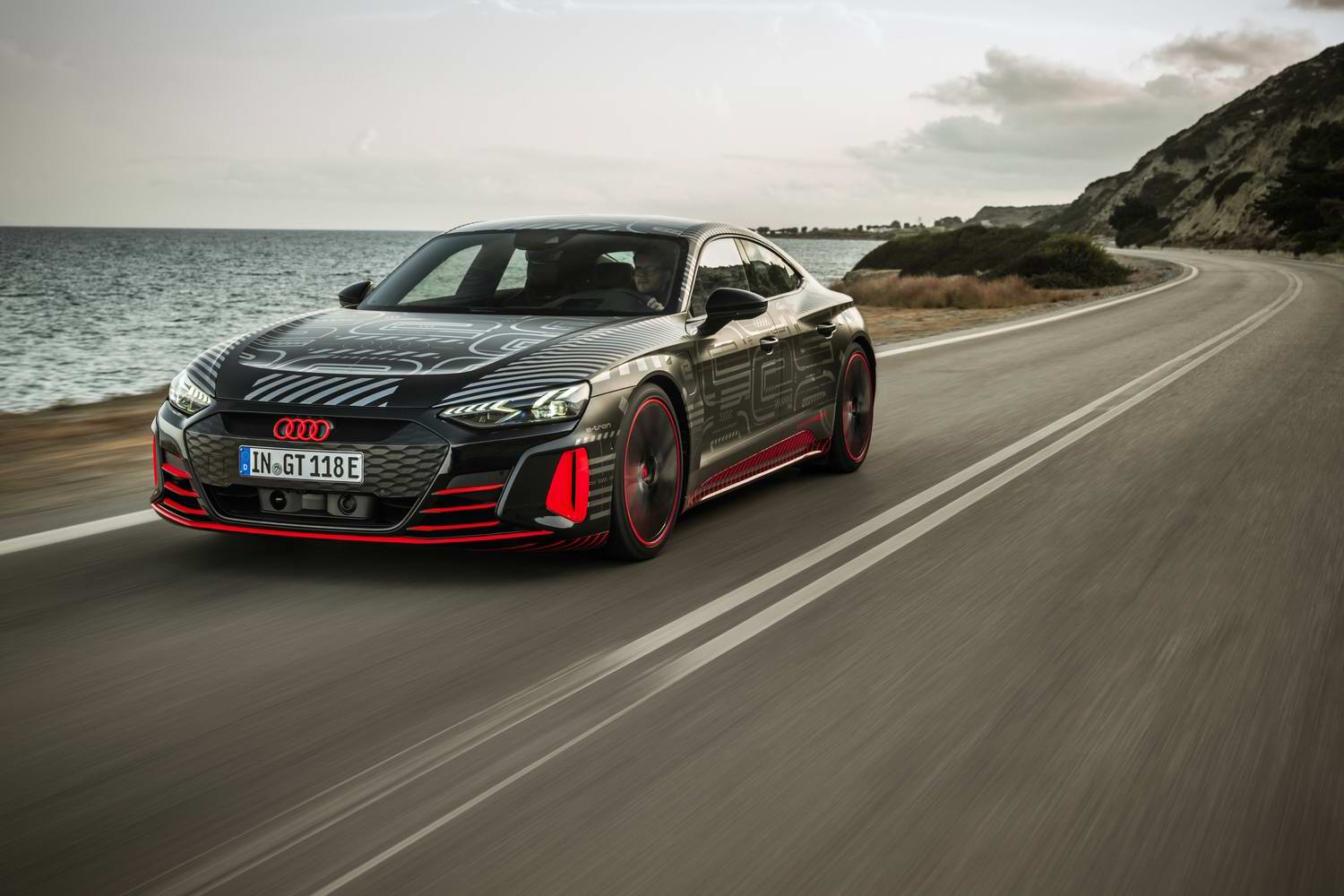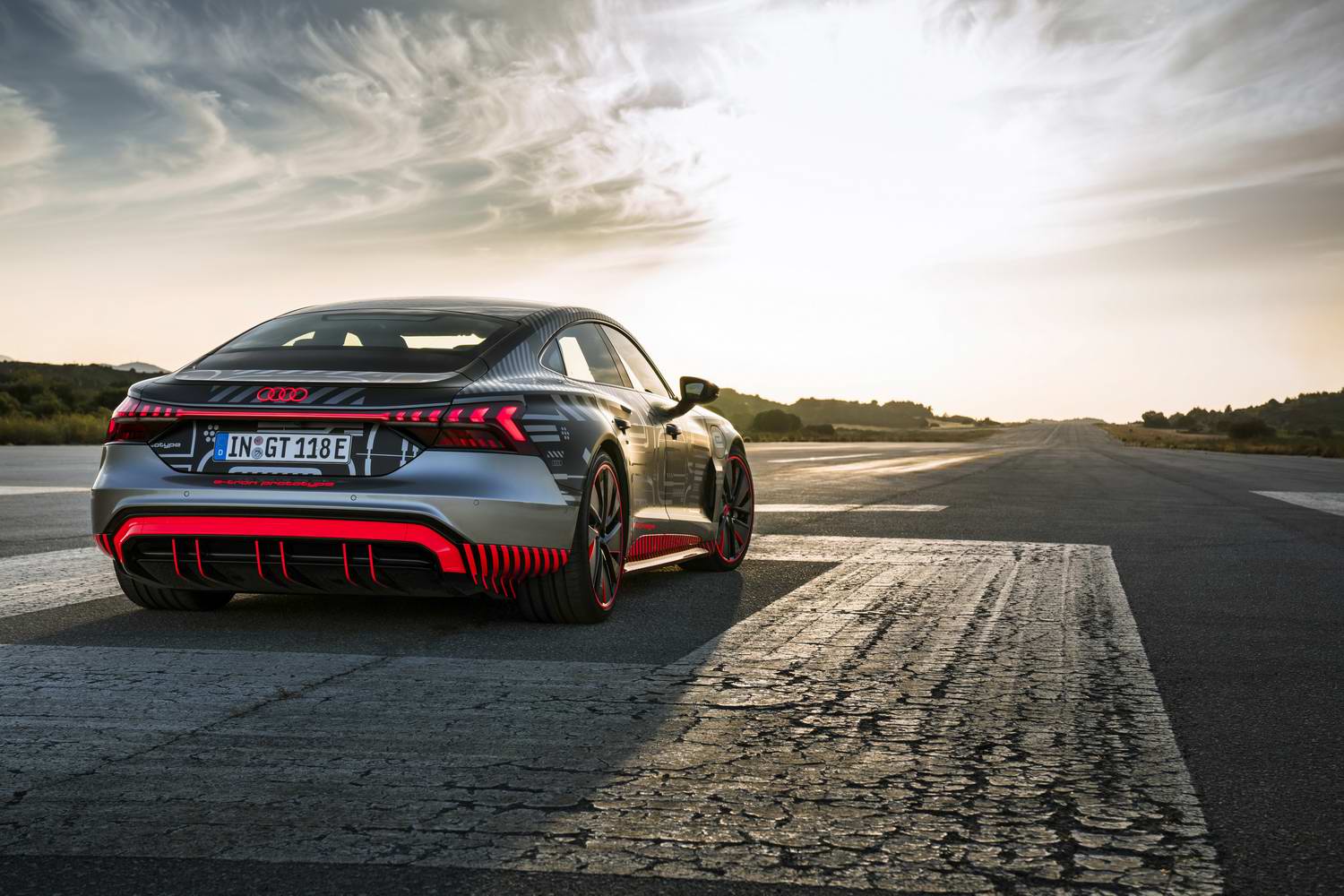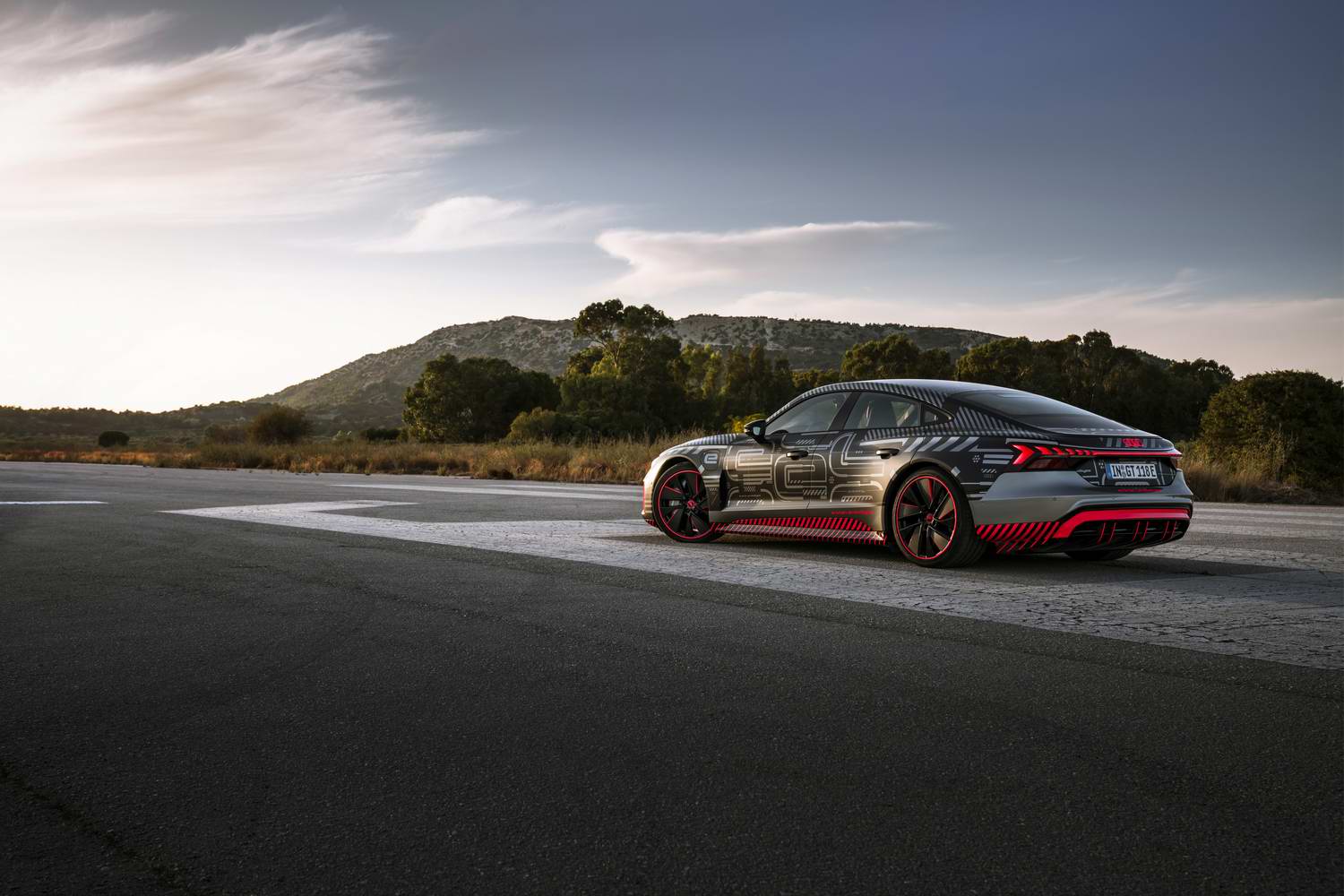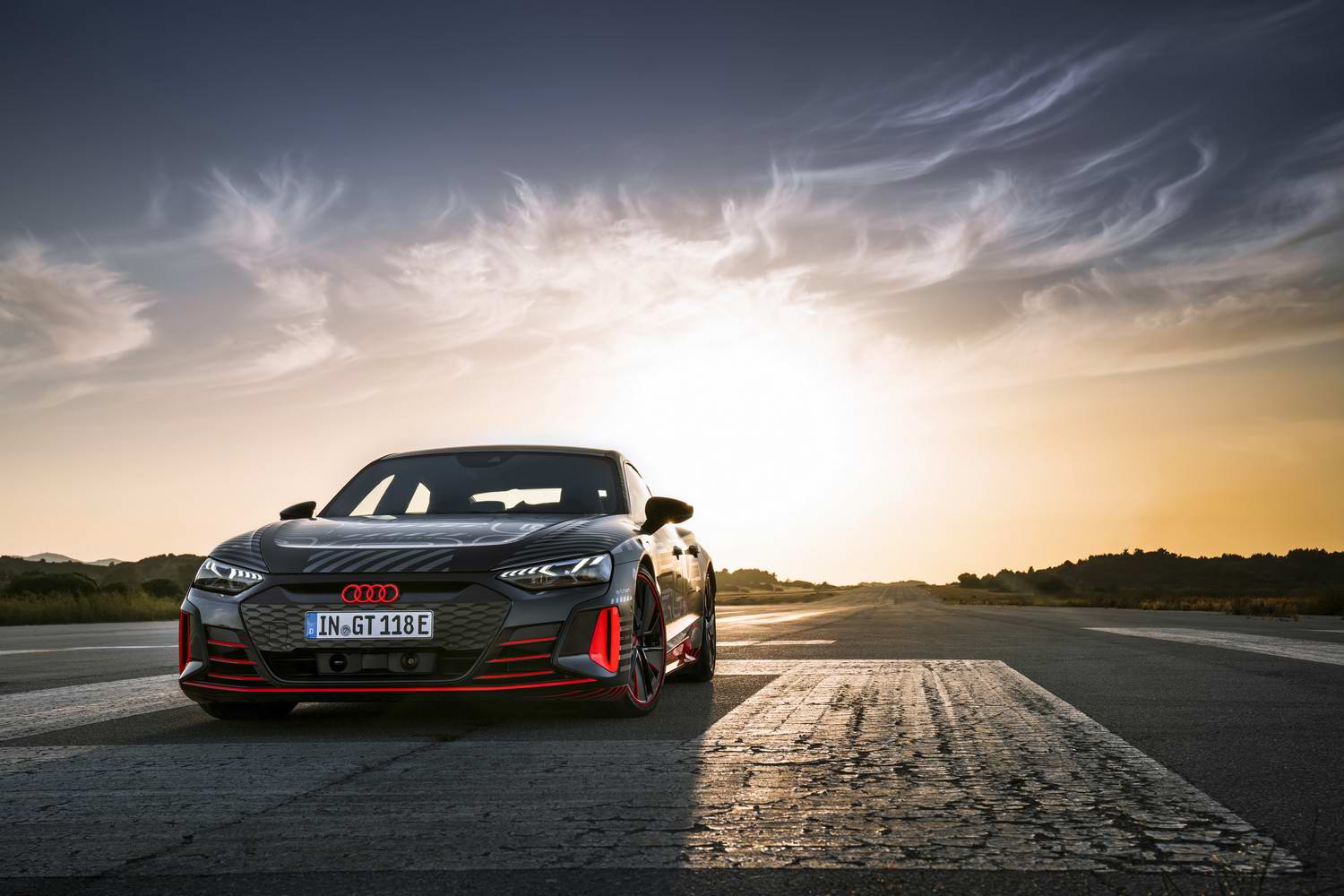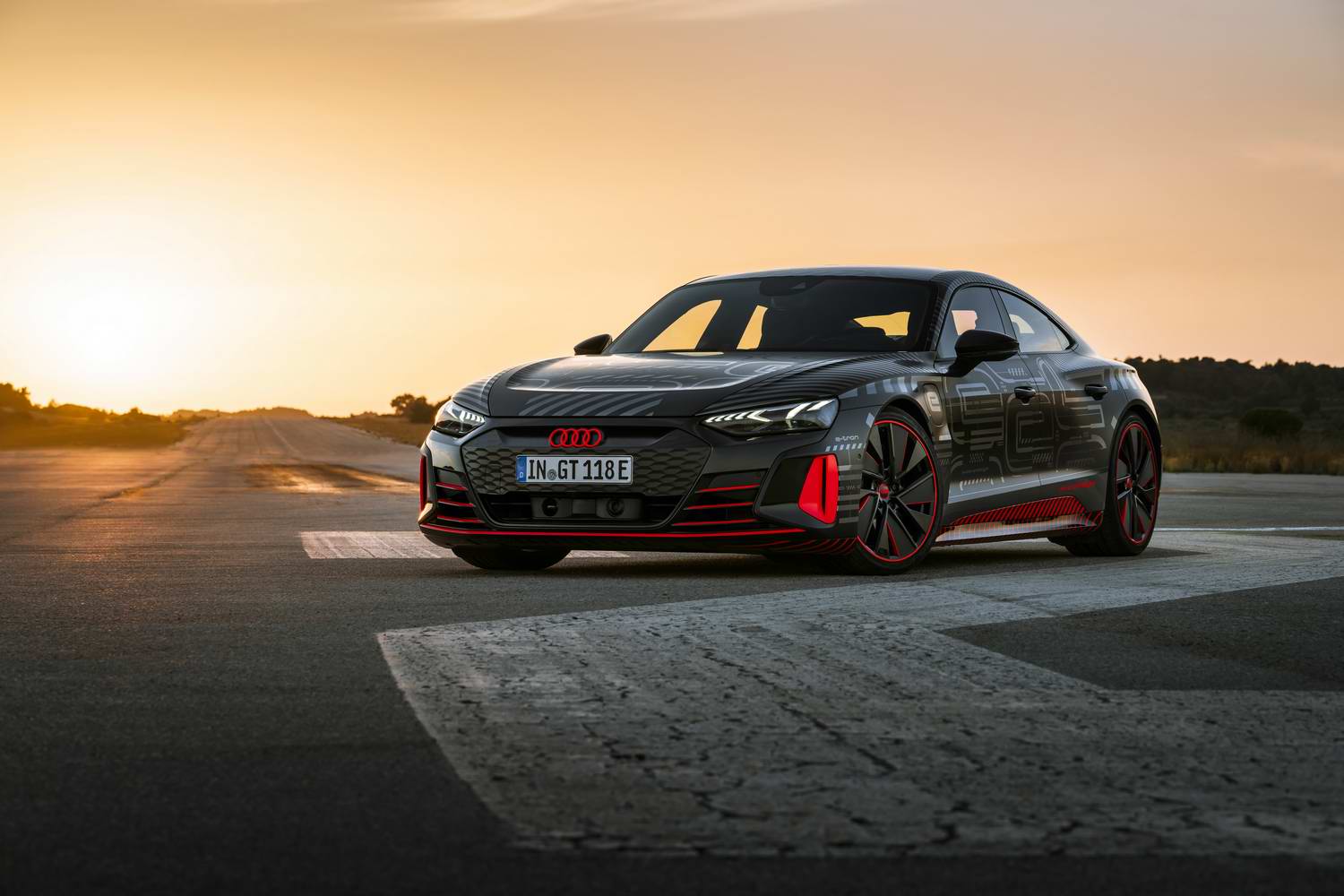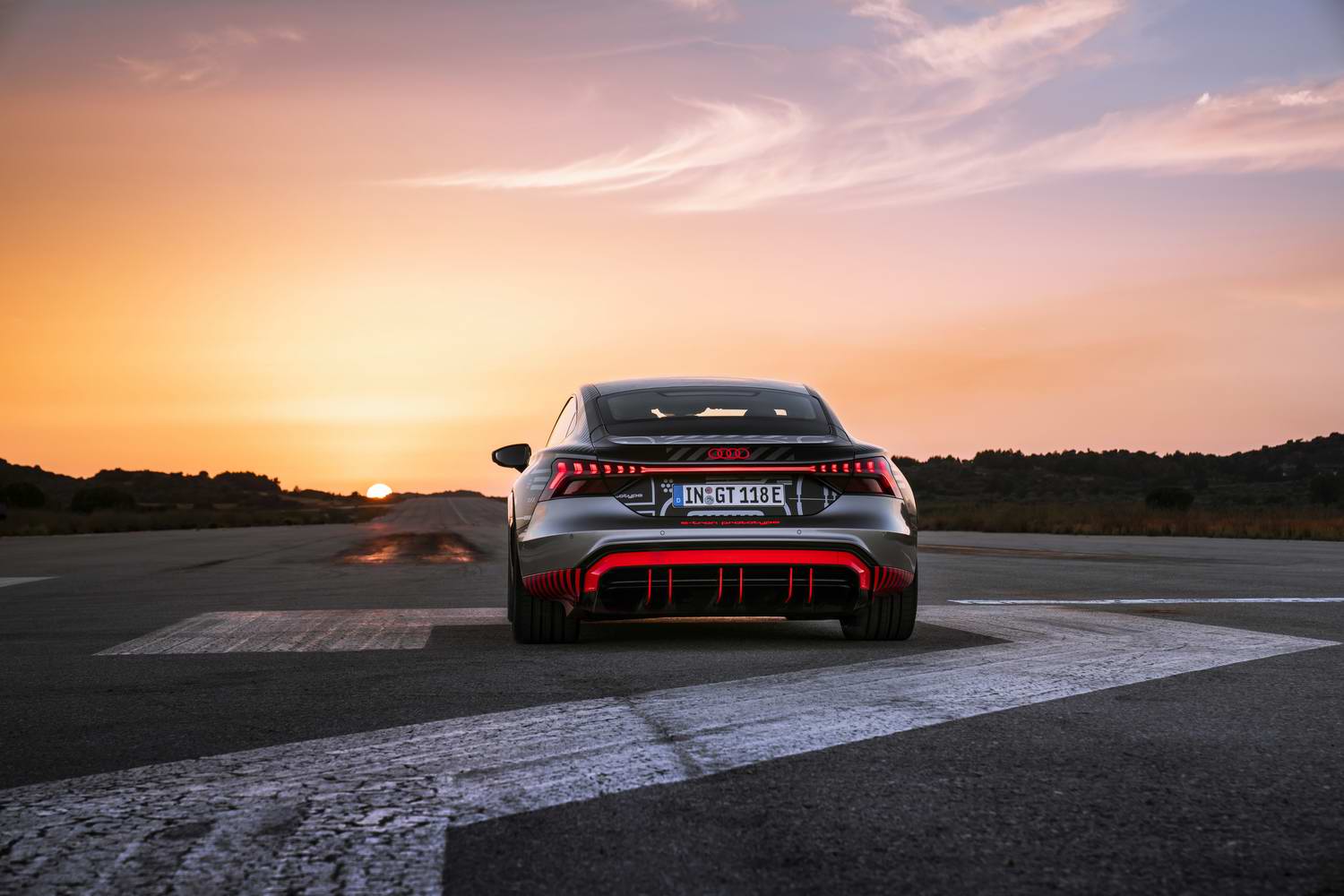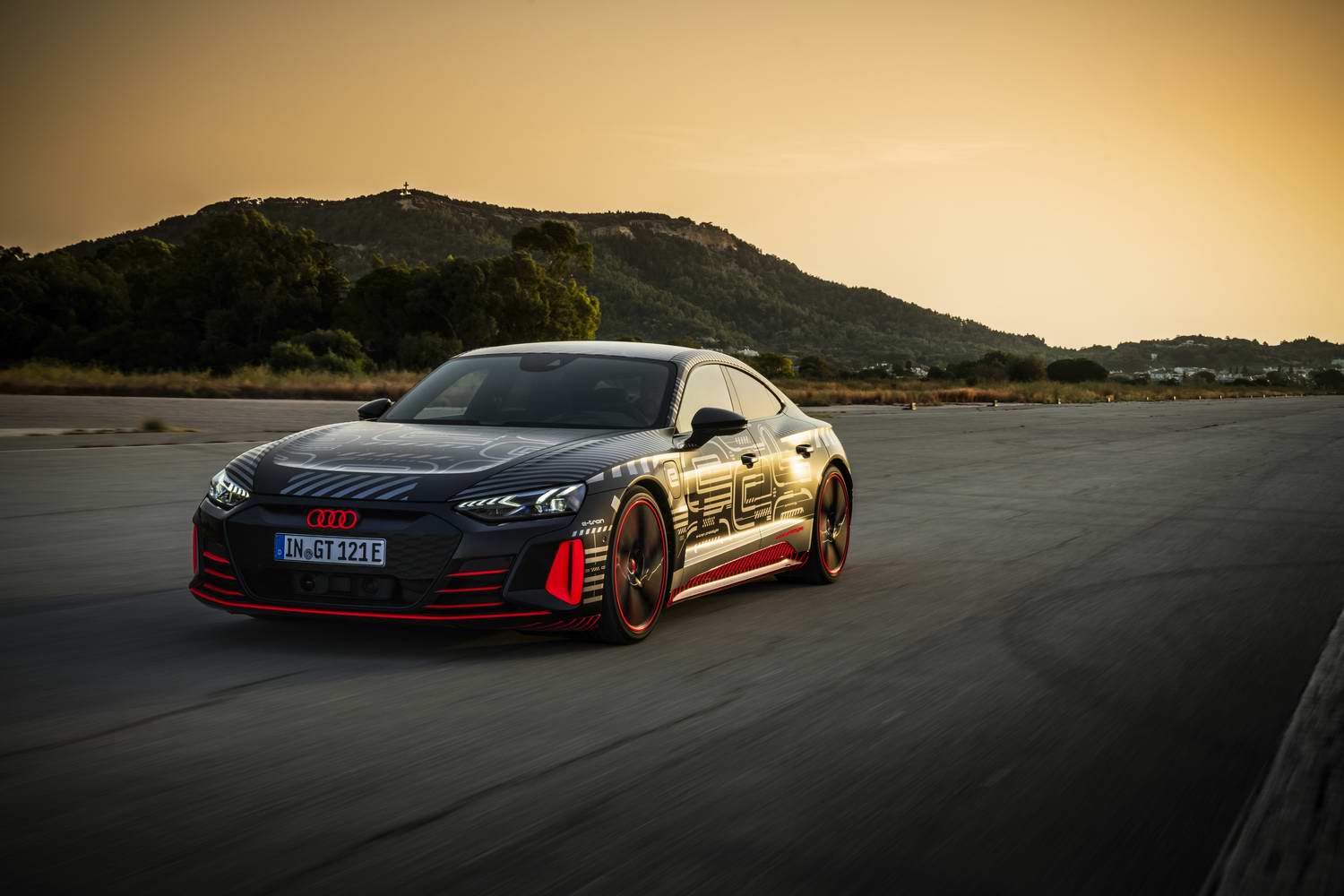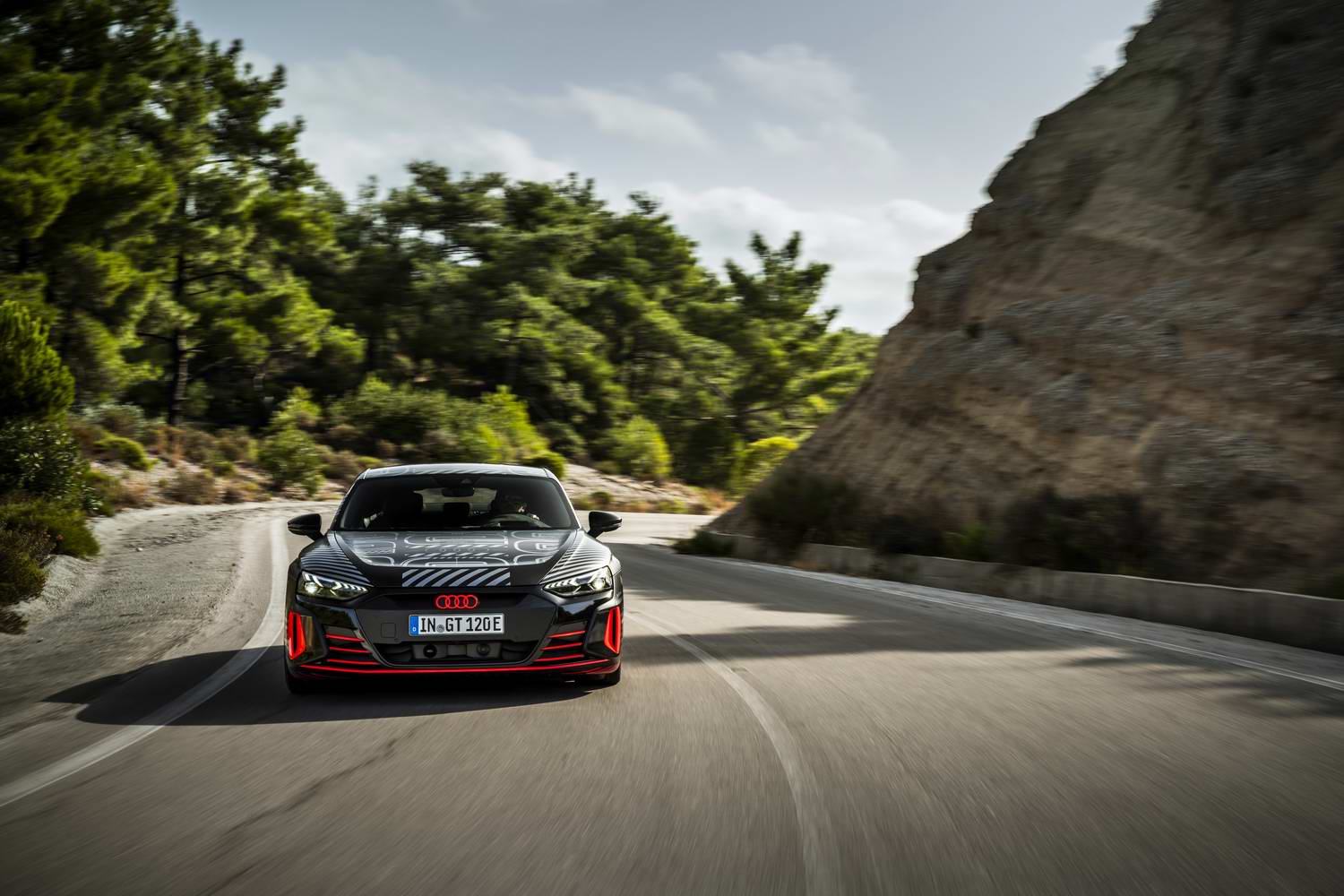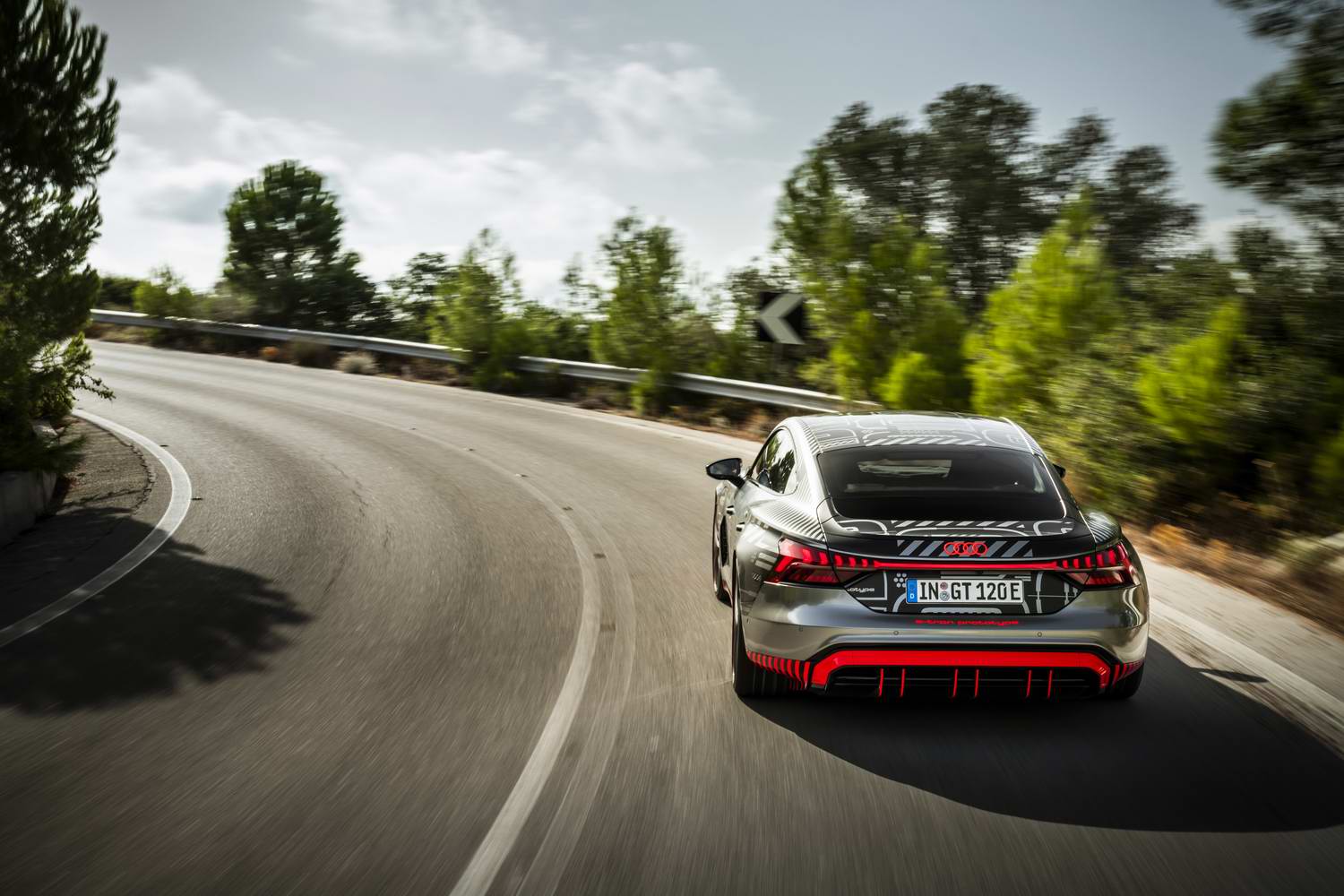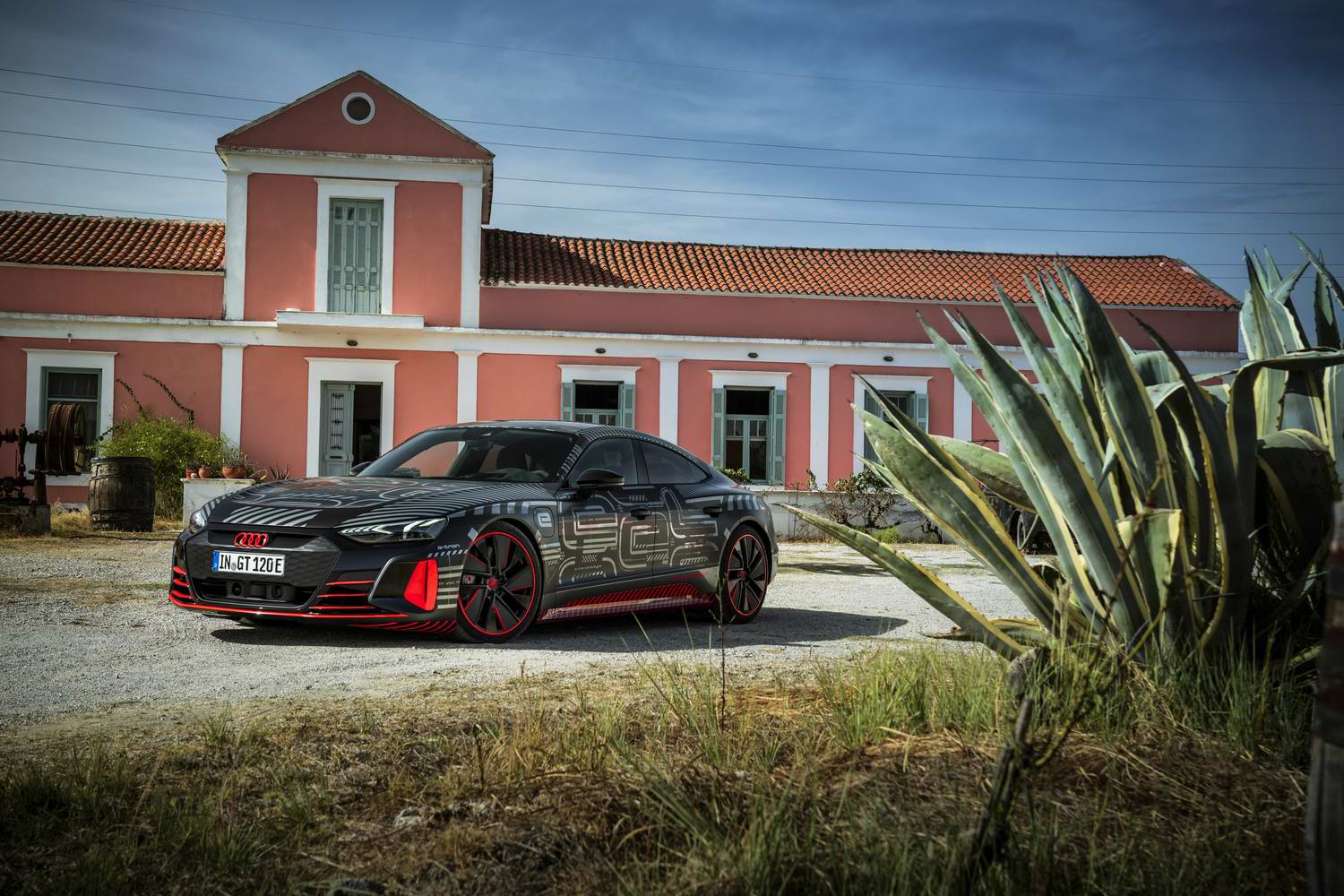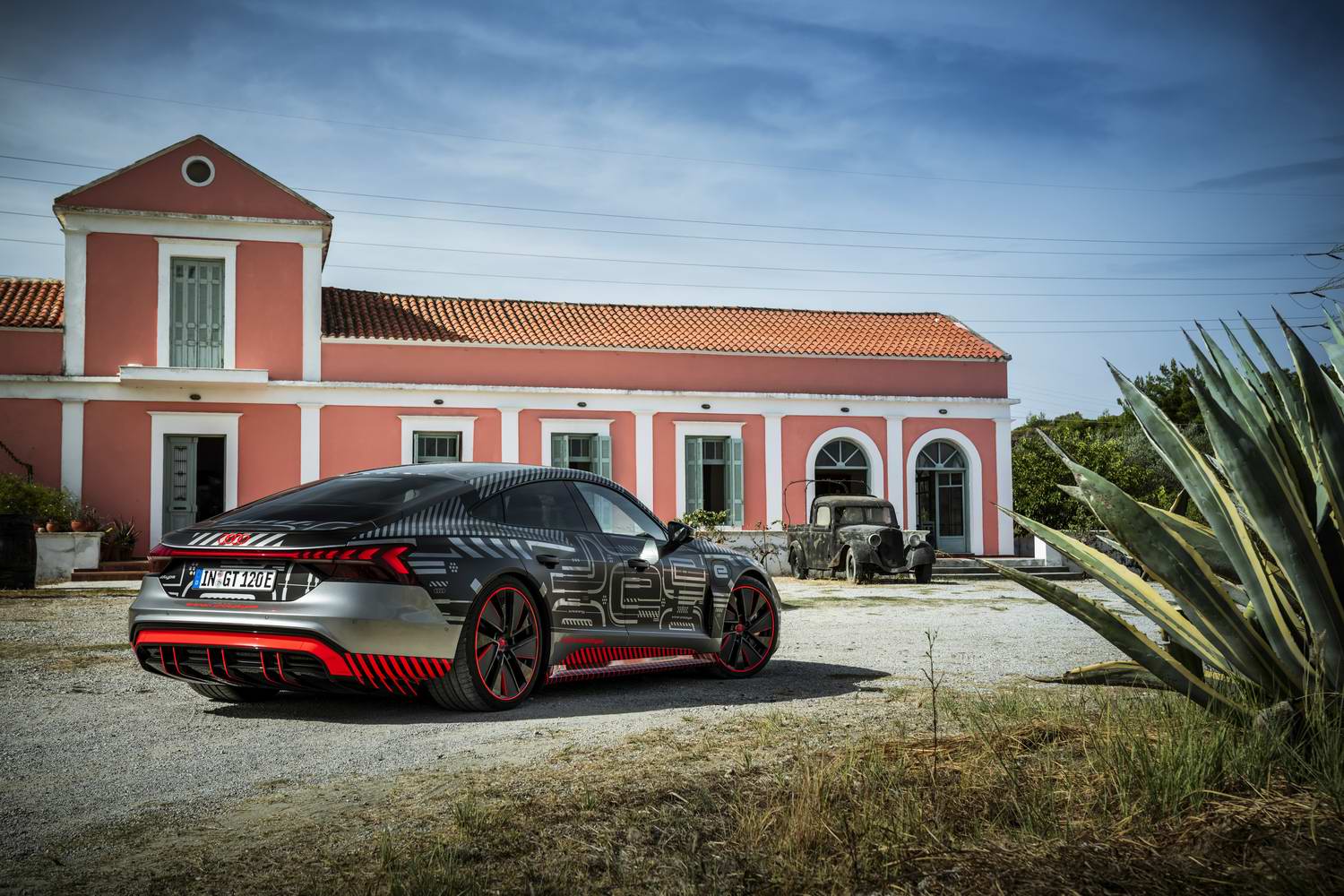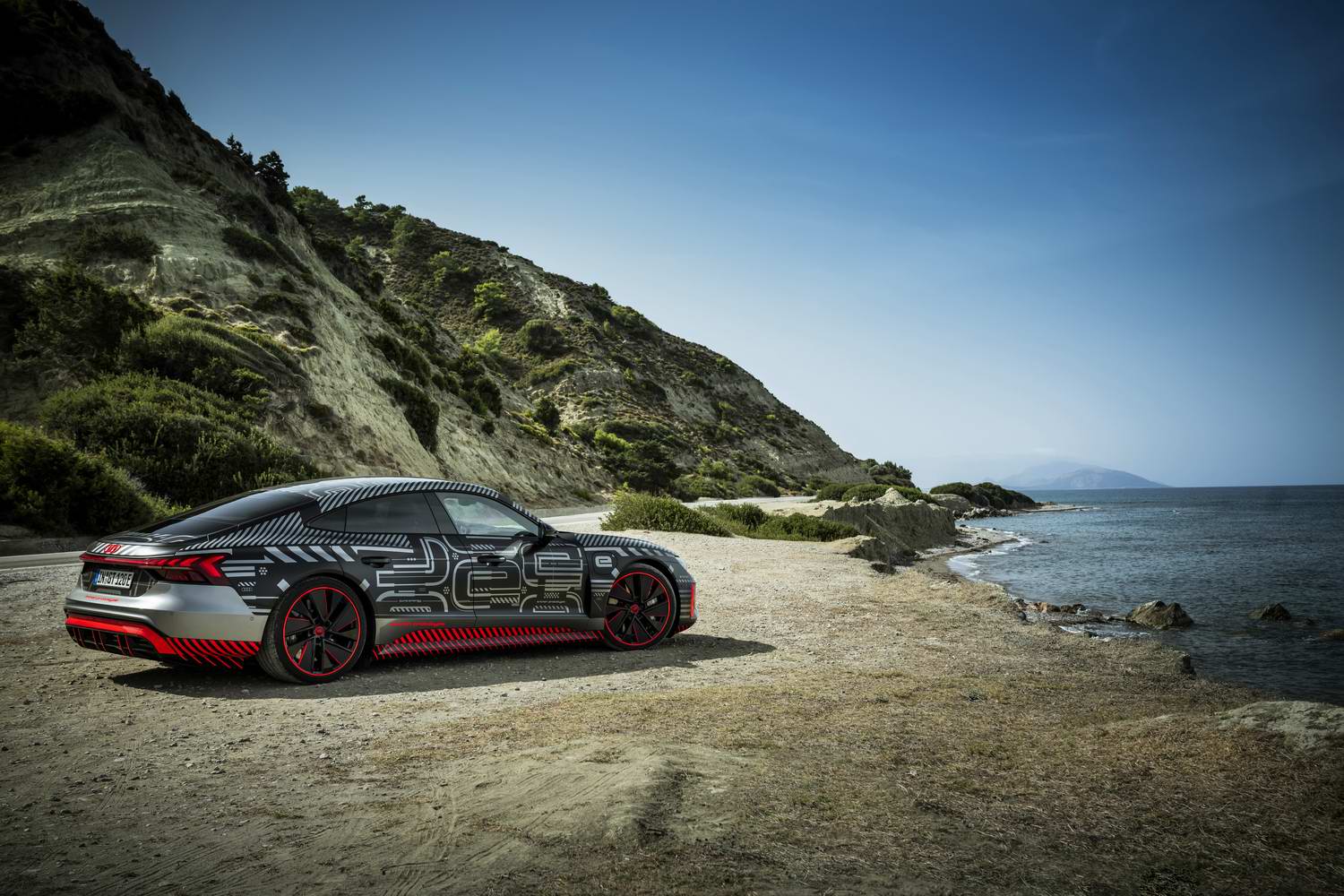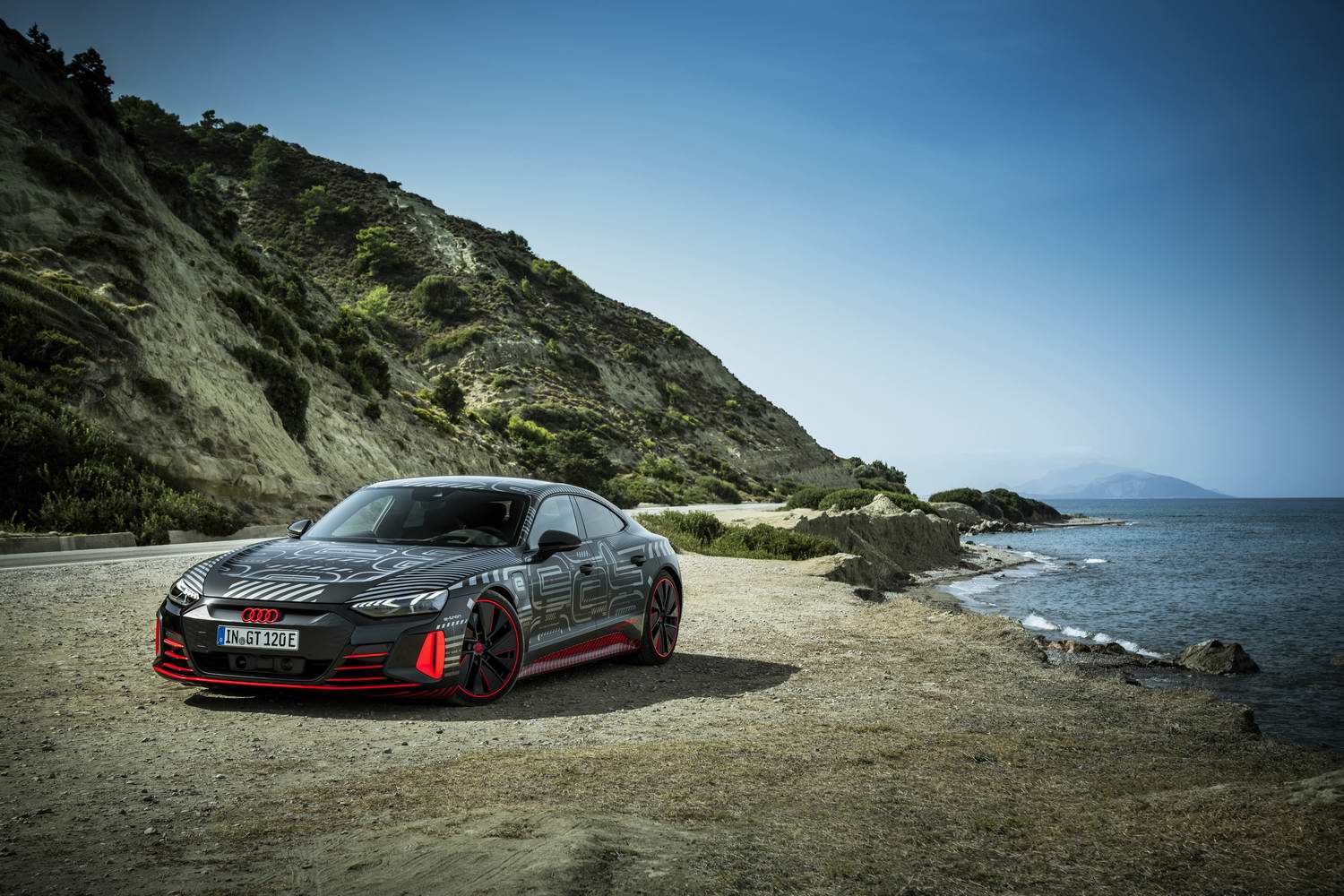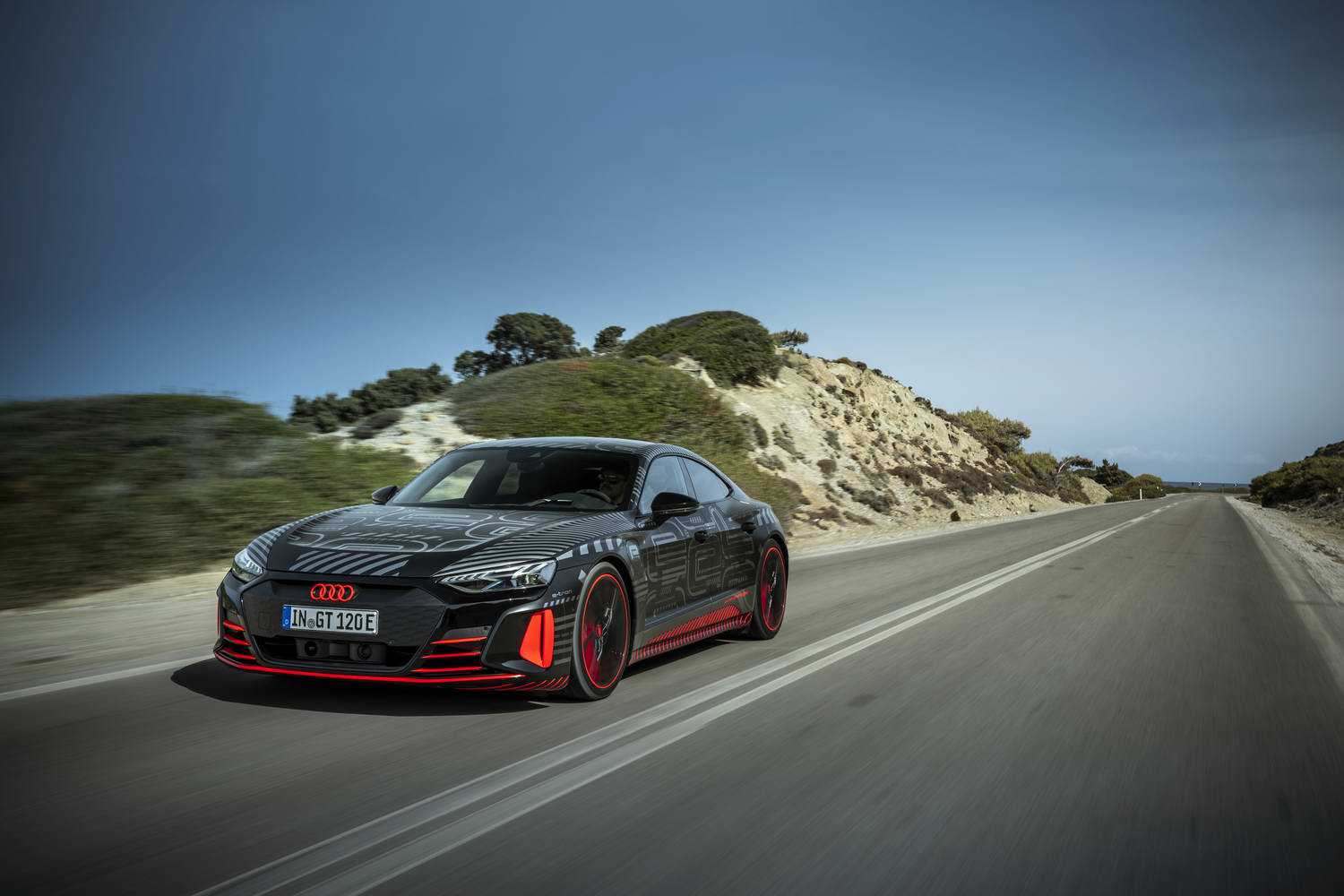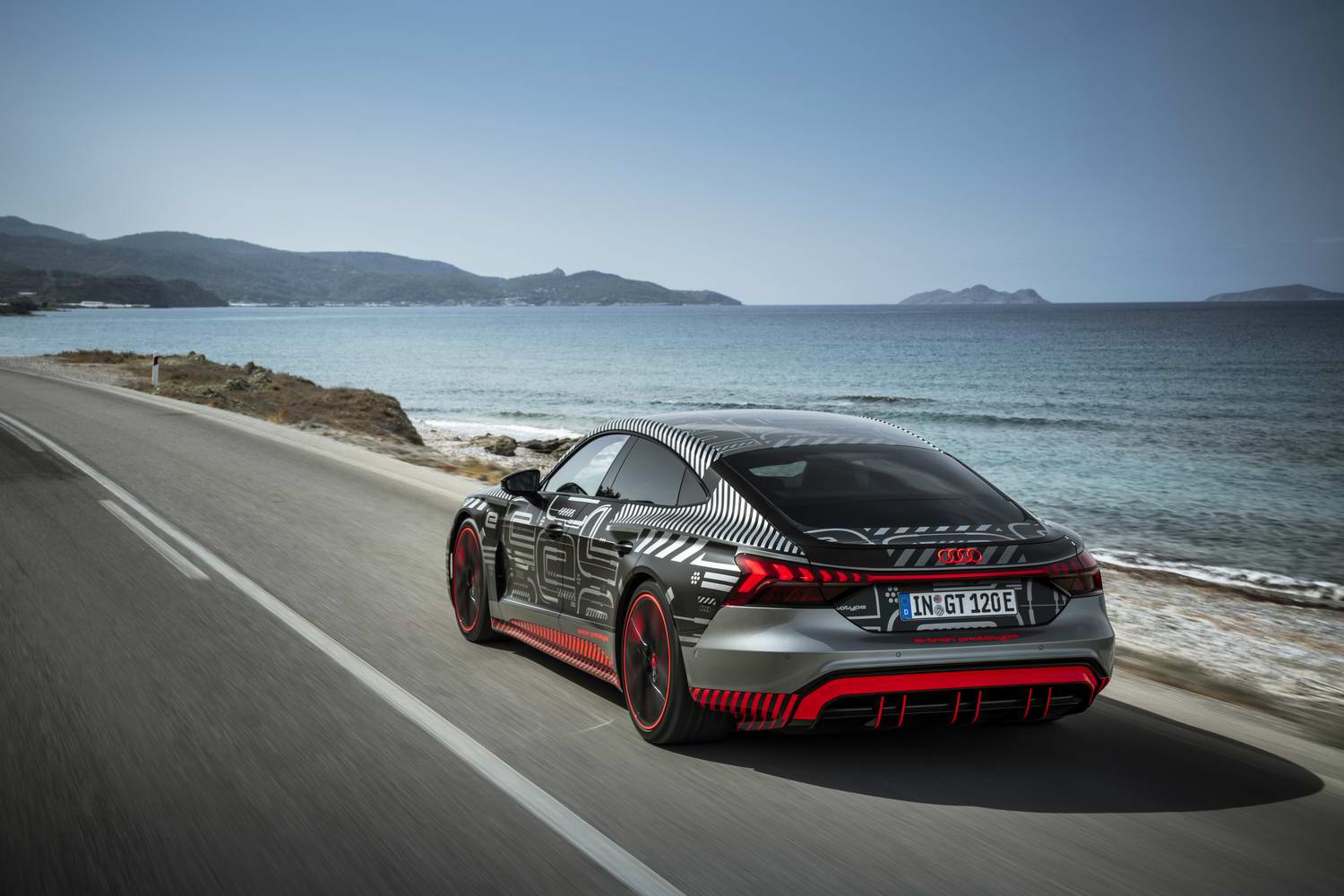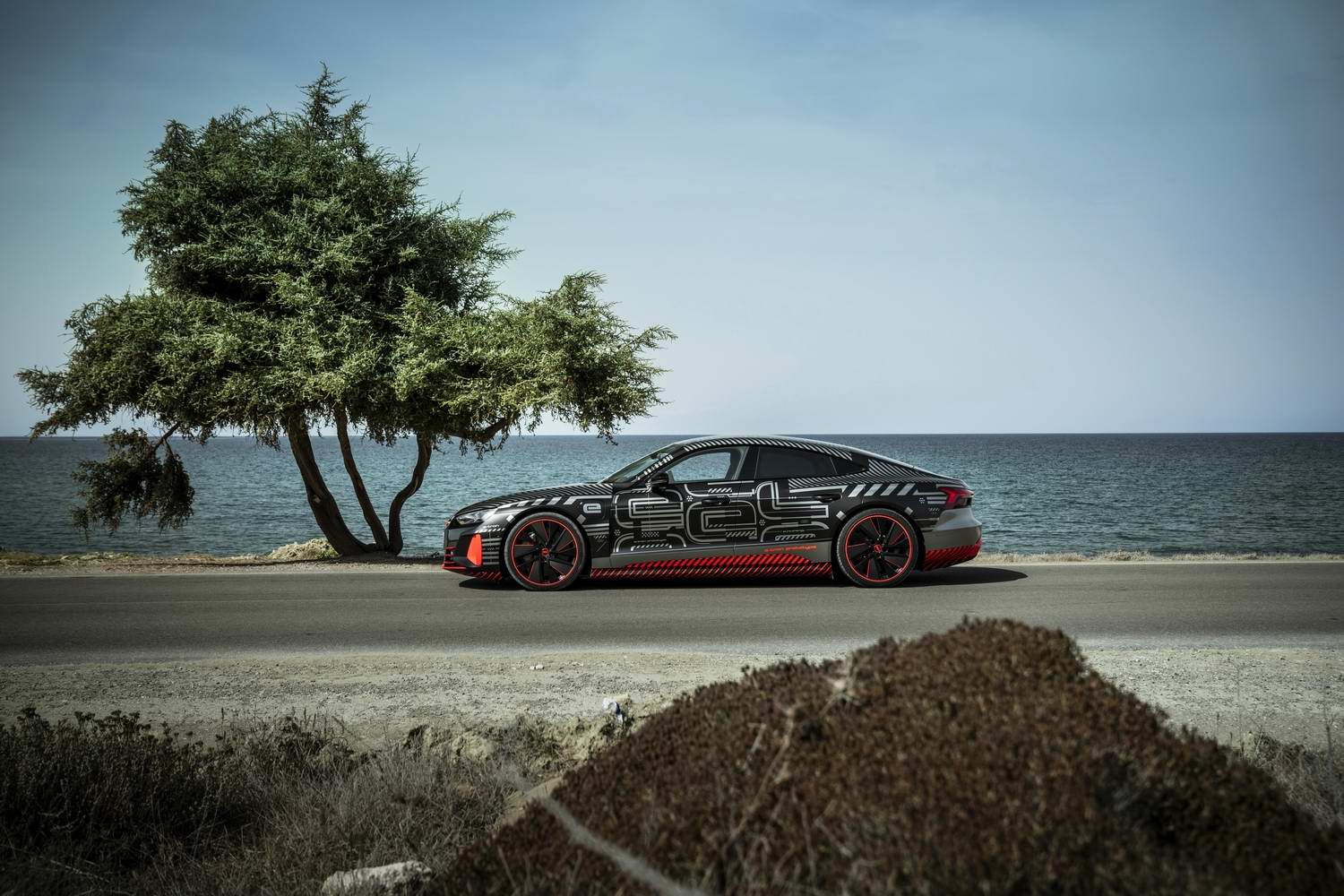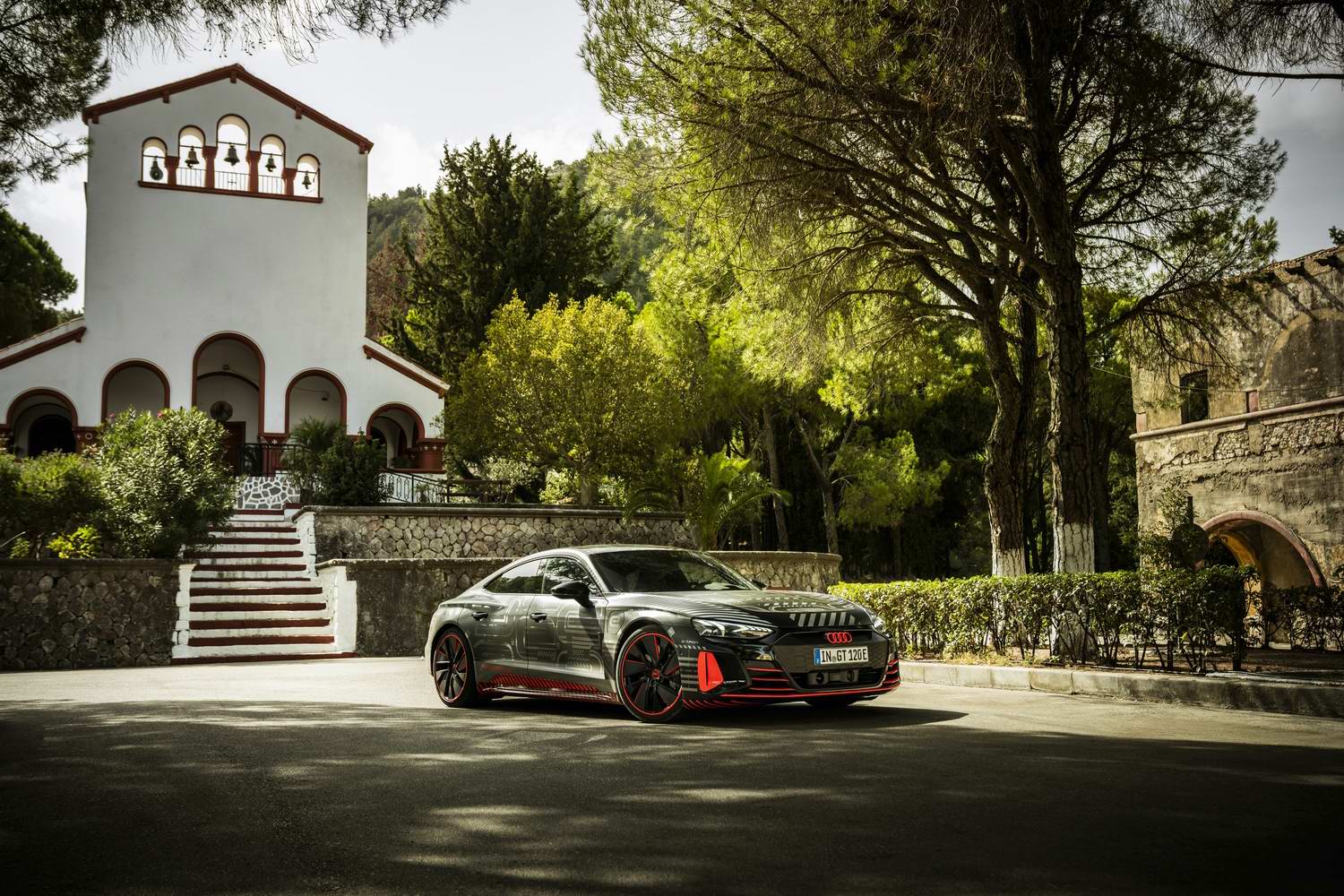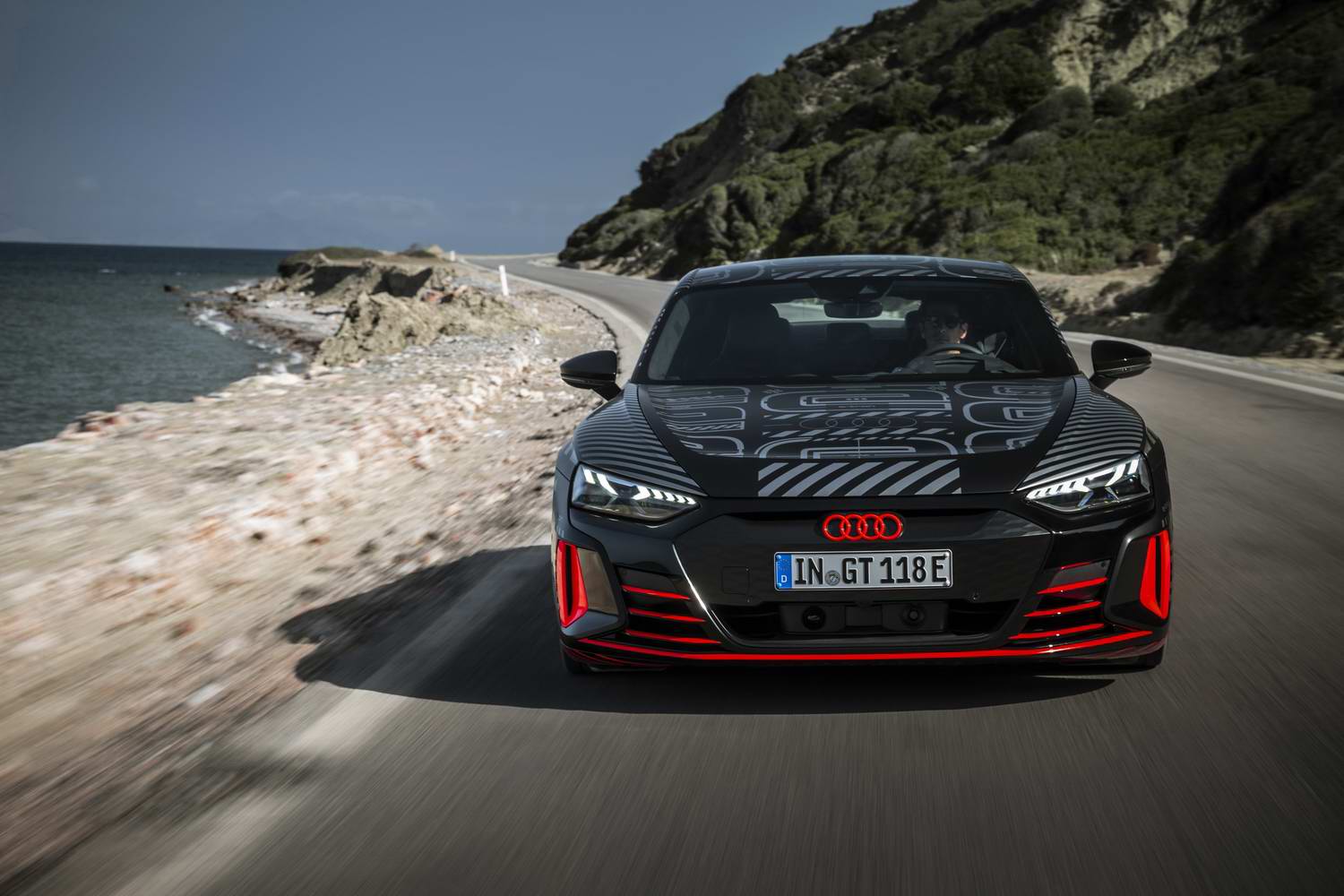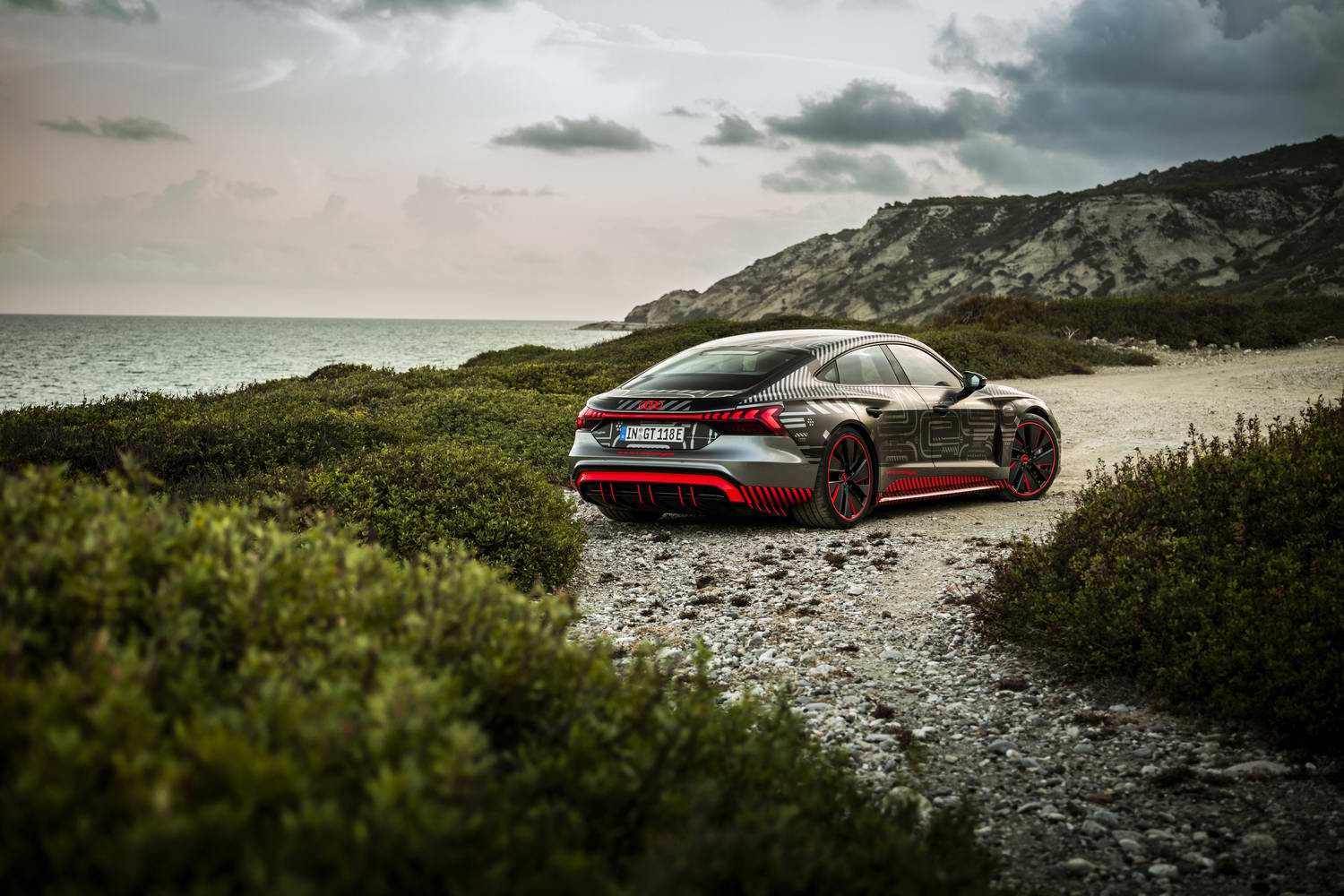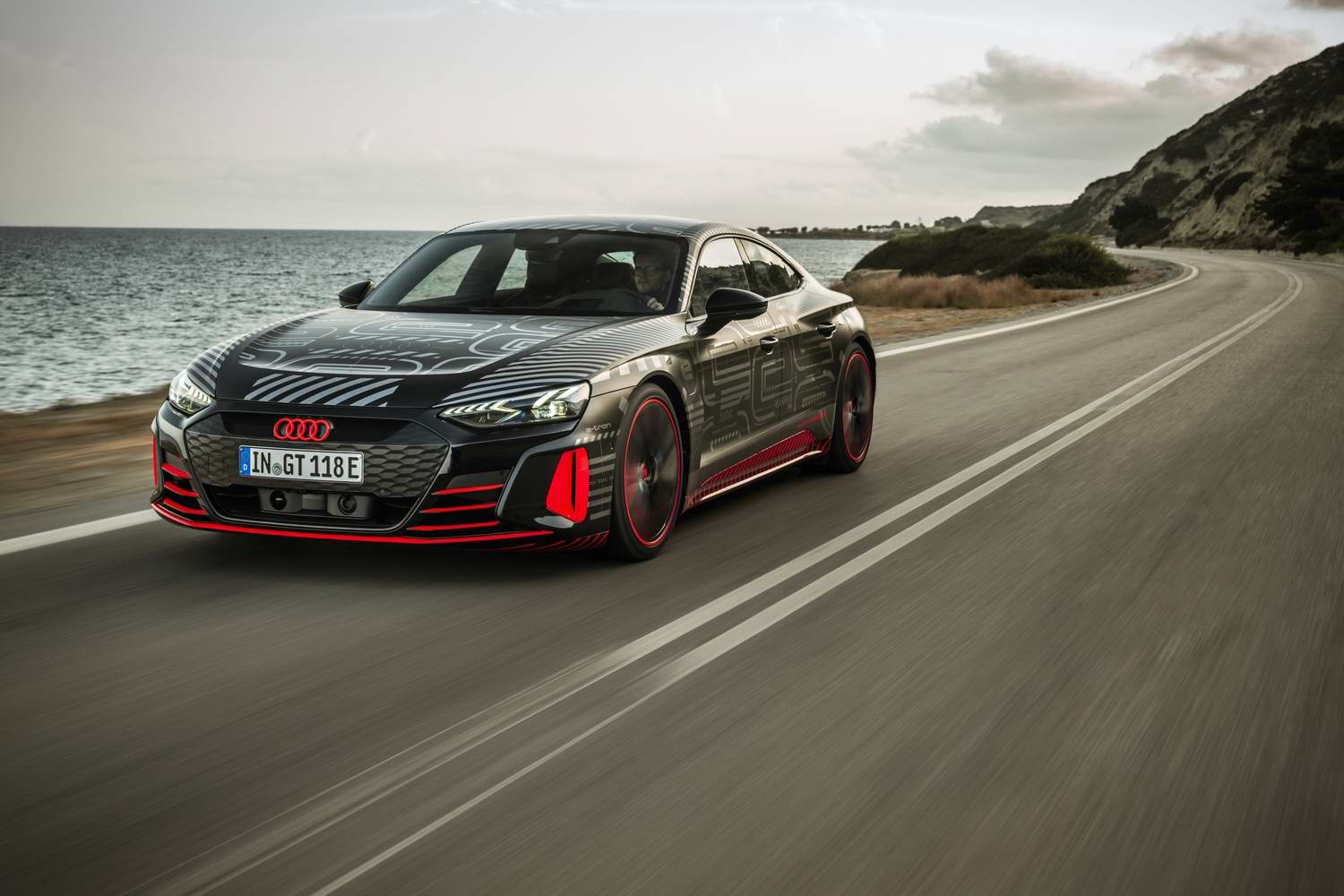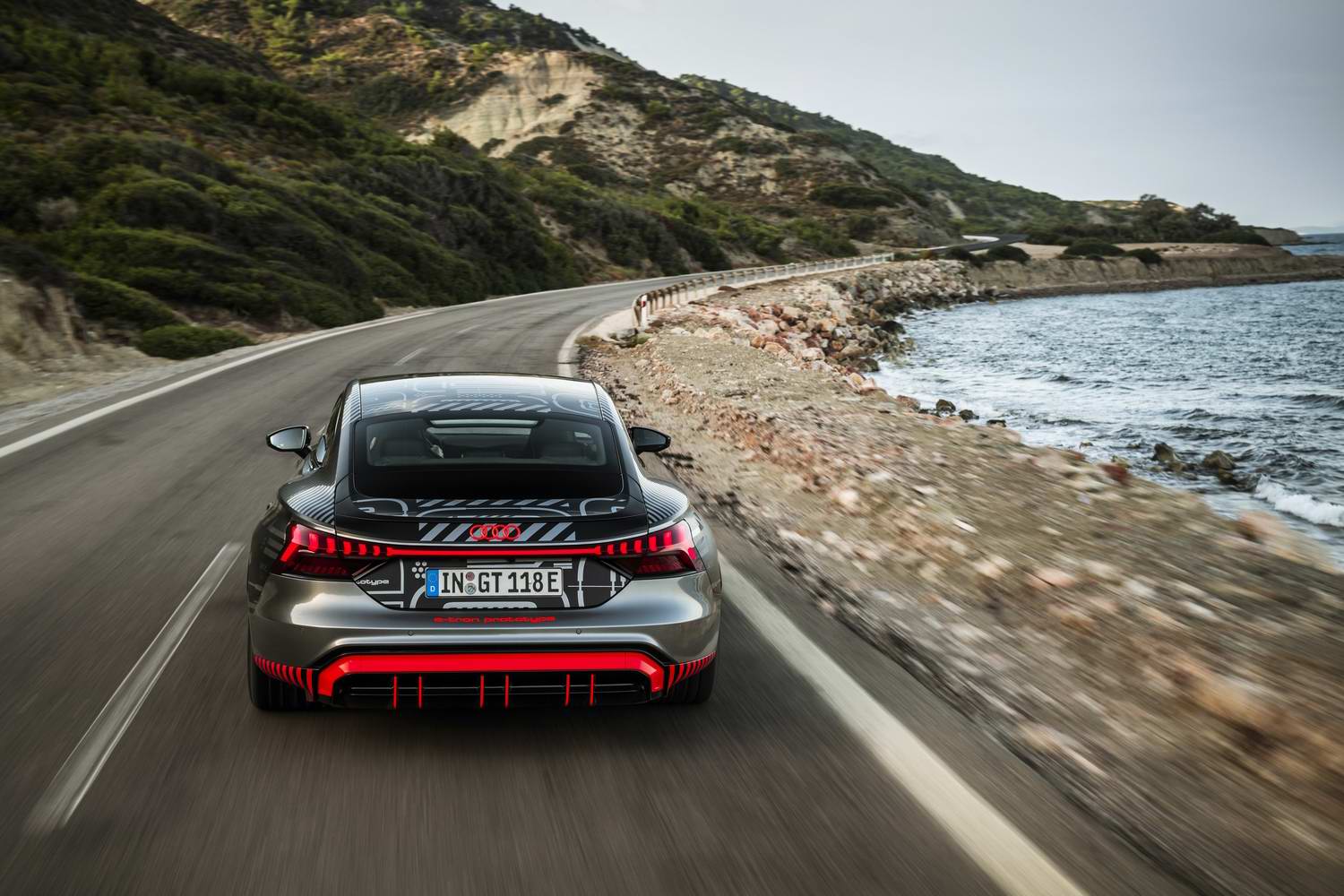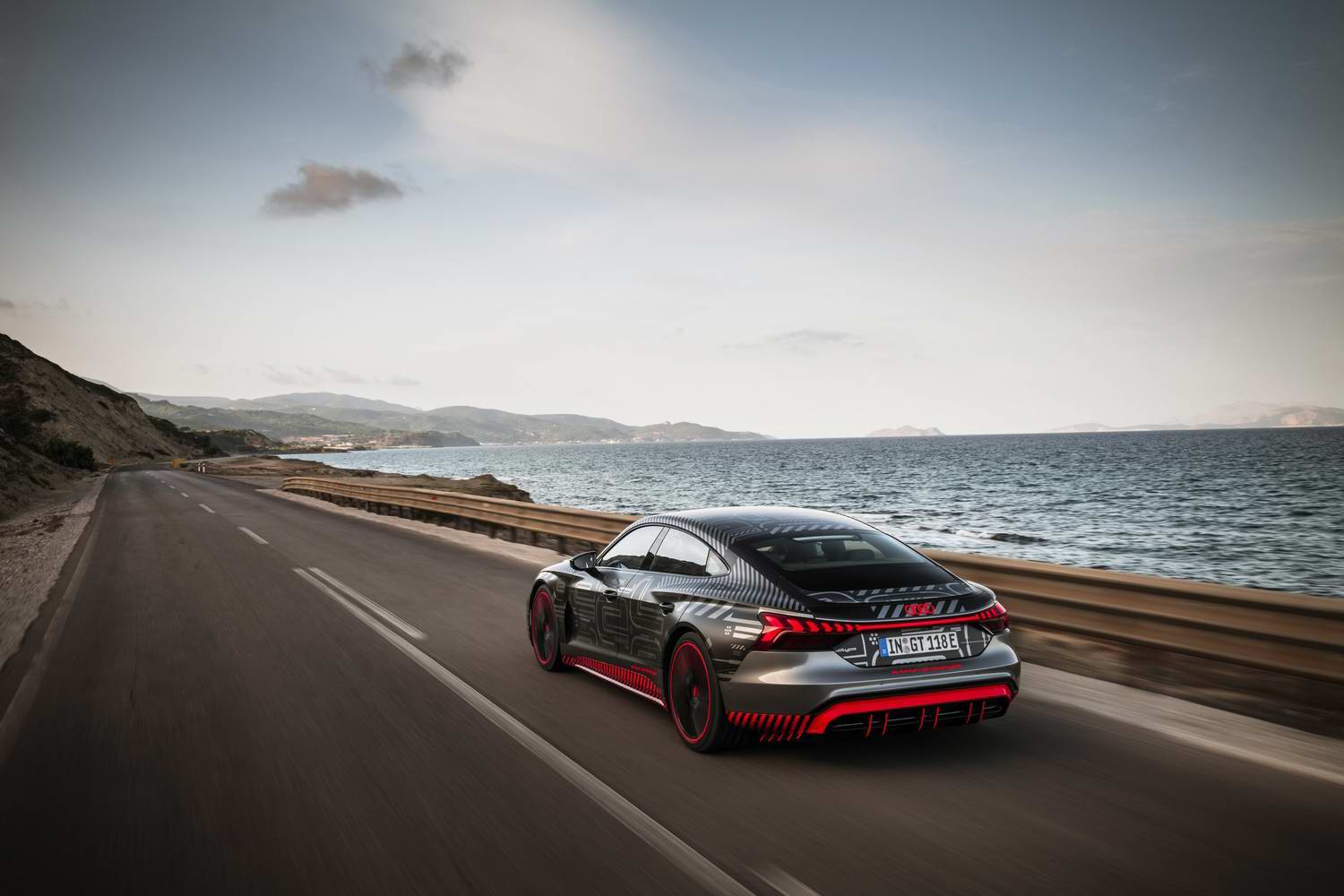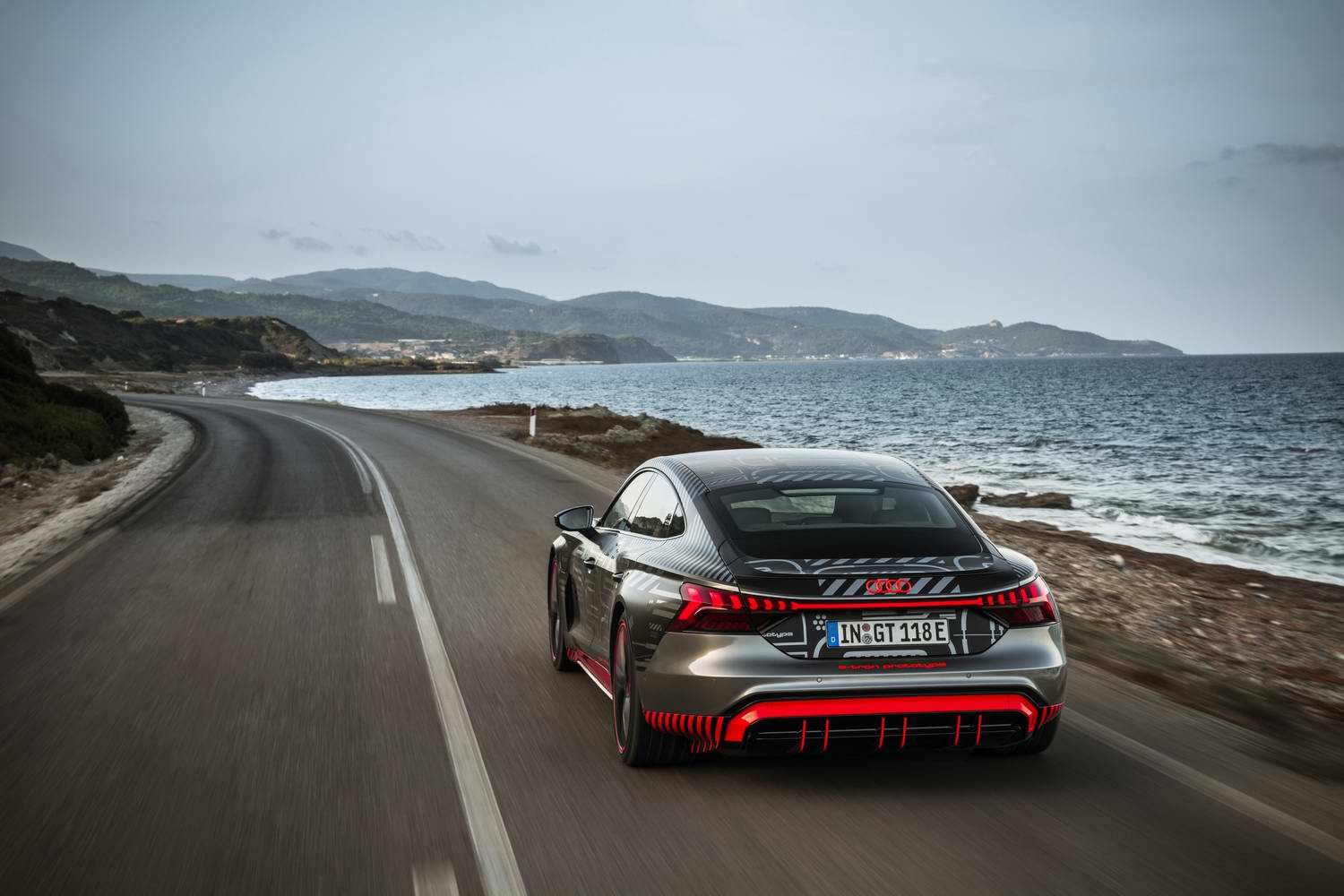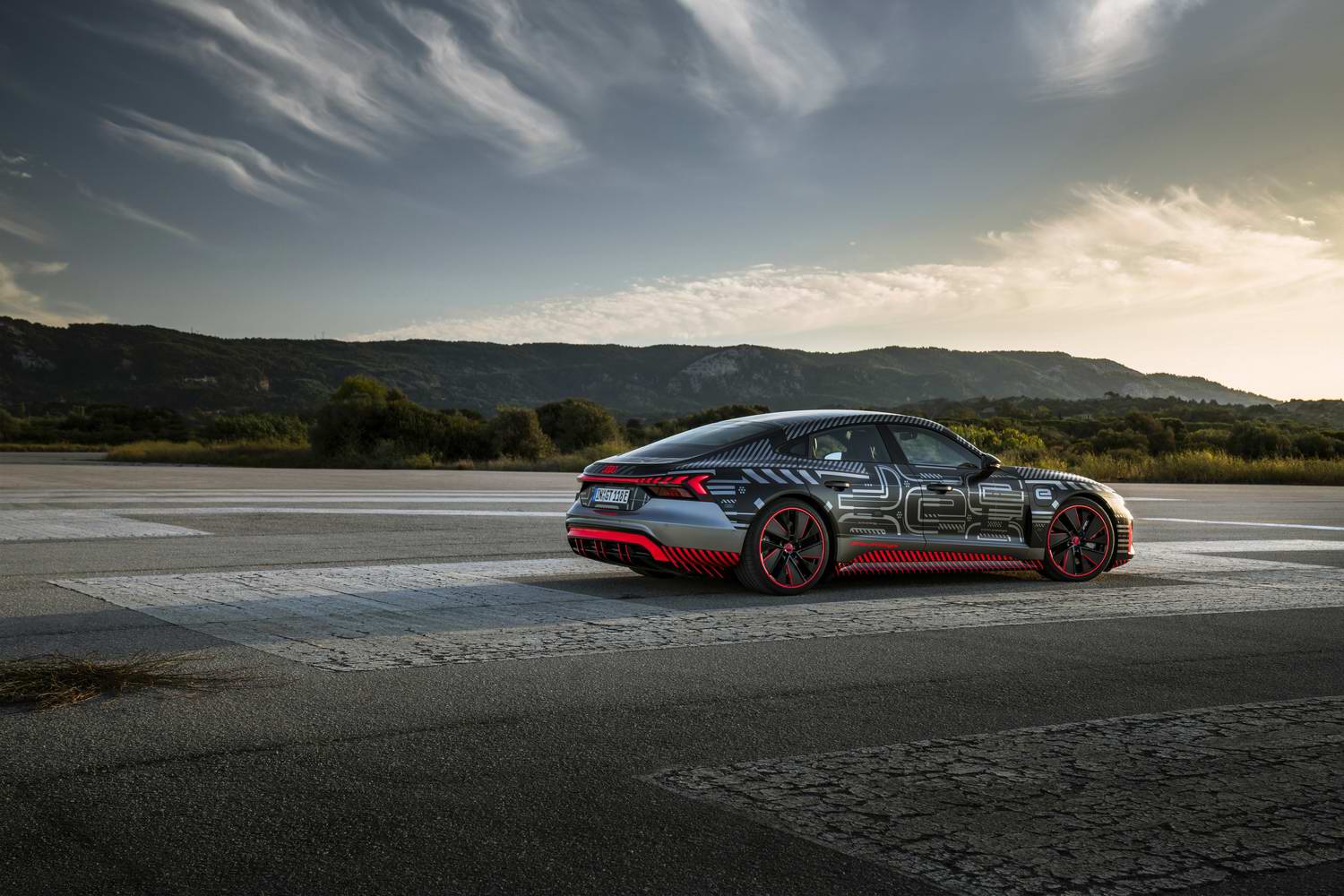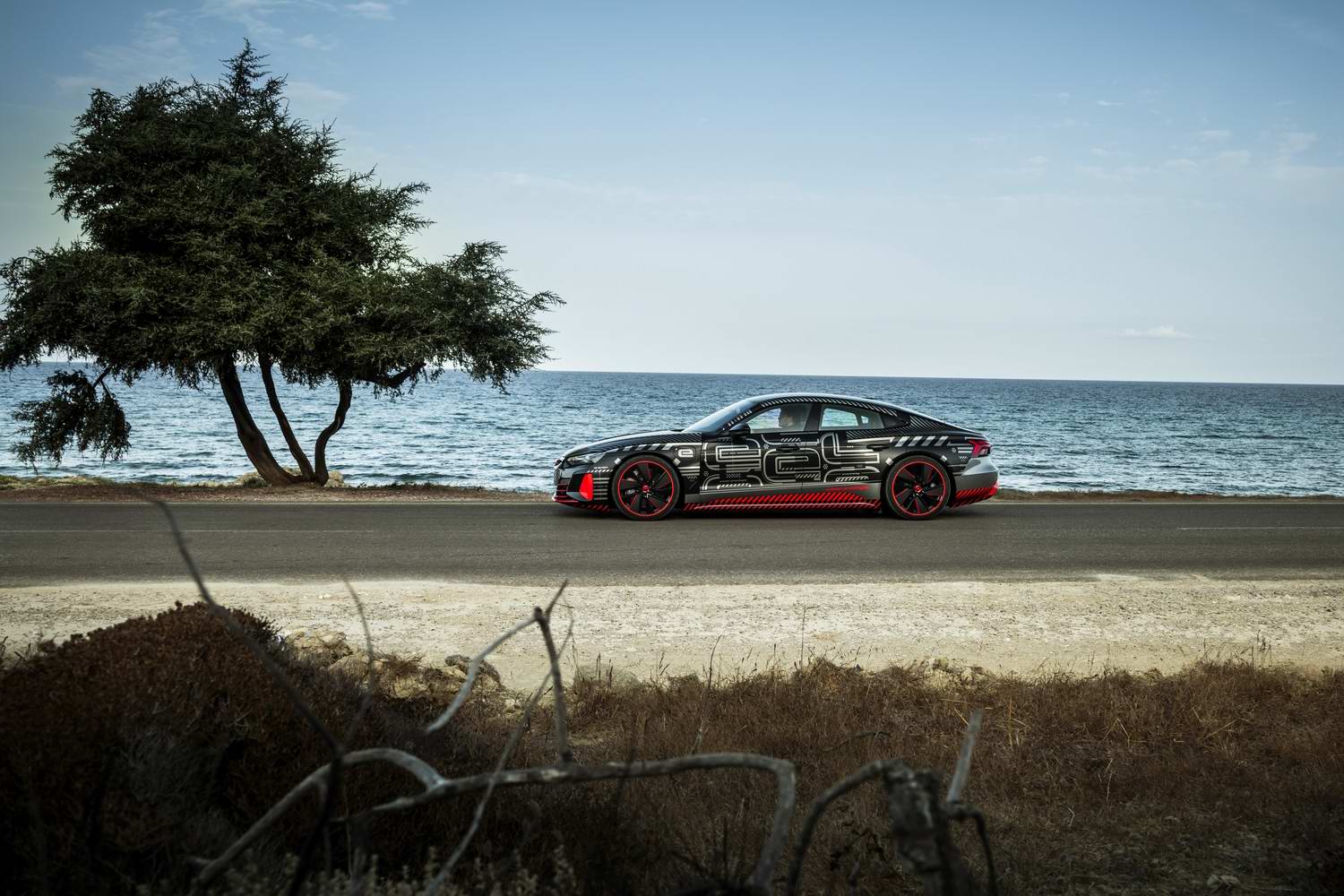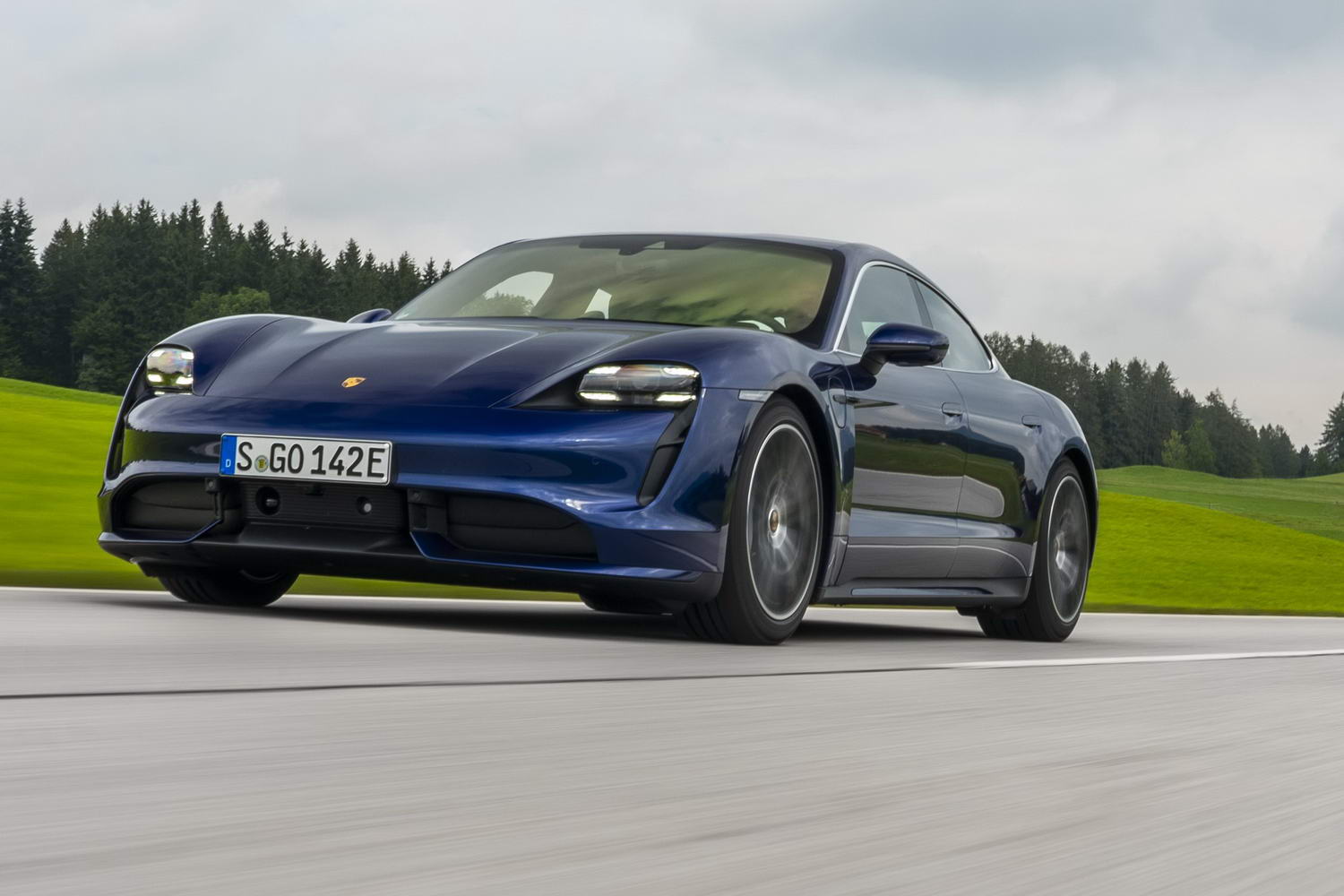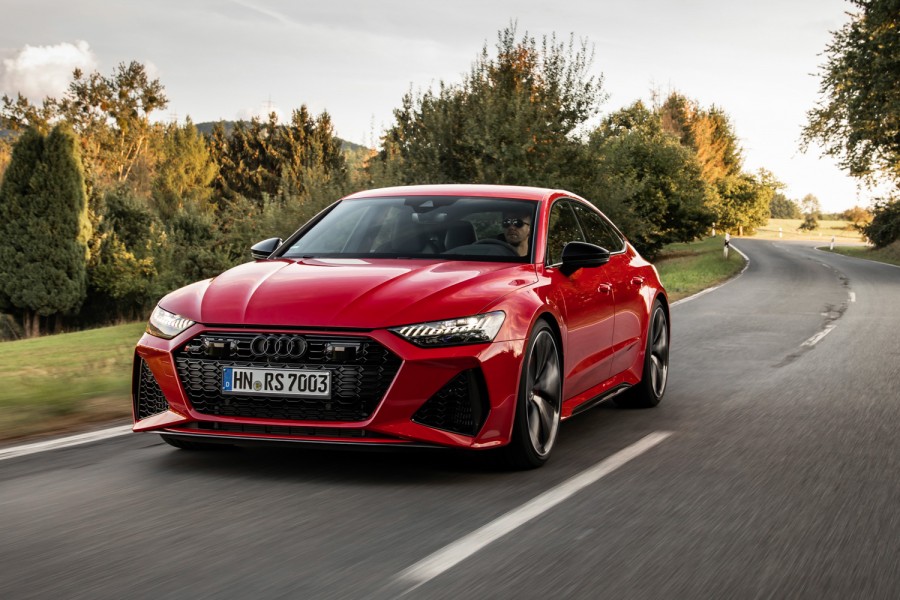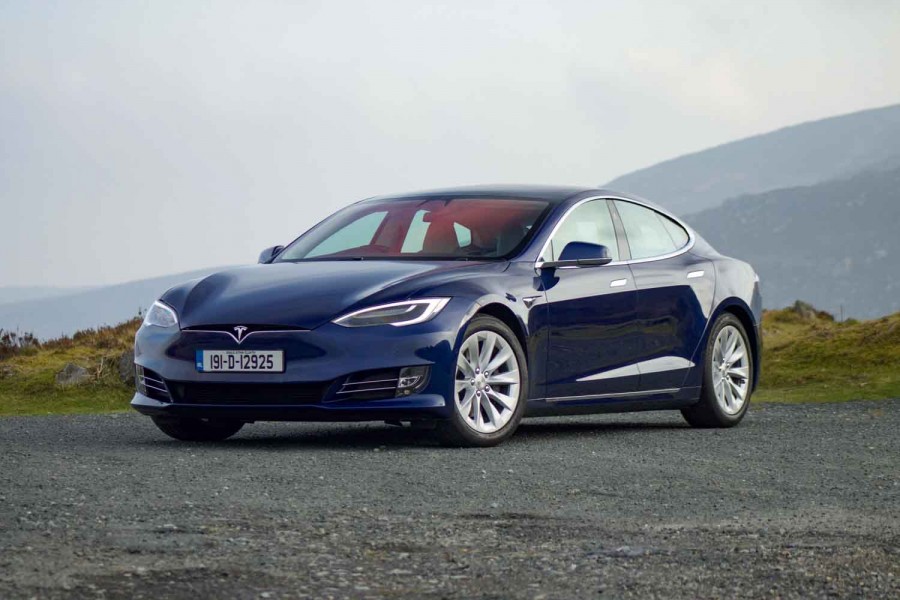Audi's next electric offering, the 2021 e-tron GT, is effectively a more relaxed take on the Porsche Taycan, but that's certainly no bad thing. While we've only driven the Audi EV in prototype form so far, the RS e-tron GT looks set to be another hugely desirable and hugely potent performance car.
In the metal
It's difficult to judge the Audi e-tron GT's scale in photographs, but just as the Taycan is more compact in the metal than Porsche's Panamera, so the e-tron GT sits a notch below the Audi A7 line-up, and carries a little less bulk - visually if not when squeezing the scales. In profile the GT benefits from shorter overhangs and an even more dramatic roofline, and while the prototype's gloriously over-the-top camouflage hides the subtle details, it can't fully shroud the comically blistered wheel arches or neat aerodynamically-efficient 21-inch alloy wheels. While it shares much with the Taycan underneath, there's no mistaking it for anything other than an Audi on the outside.
The interior's a similar story. Well, it would be were most of it not covered in sheets to protect its final design from prying eyes, so only certain elements are readily apparent. One of those is the steering wheel, which is standard Audi fare, while the driver's instrument cluster looks much as you'd expect from any other recent Audi too - the same mind-boggling array of different layouts and information displays, though the standard rev counter options naturally make way for the kind of 'swingometer' dial we're using to seeing in other EVs that shows where the energy's going.
Audi's drive select button remains slightly inconveniently located, squirrelled away at the intersection between the transmission tunnel and dashboard, though you can click through the modes on the central touchscreen too. The transmission selector takes the form of a small plastic rocker in the centre console. Materials feel up to the usual Audi standards, and some of the new trim is very welcome - our car featured a comfortable, tough-feeling and vegan-friendly fabric upholstery made from recycled materials, for example, as well as fairly convincing and actually quite tasteful wooden inlays on the door cards.
The overall vibe is less dour than many recent Audis, so EVs are having a useful influence on interior design if nothing else. Our hand was slapped away when trying to inspect the boot, but rear seat space is as-expected - smaller adults should be comfortable enough, but the sloping roofline makes headroom tight and there's not a great deal of space for feet under the front seats.
Driving it
Mechanically (or should that be electrically?), the RS e-tron GT sits somewhere around the Porsche Taycan Turbo in terms of output and performance, so it won't quite tread on the toes of the Taycan Turbo S, but is otherwise still a bit of a rocket. The front axle is powered by a 175kW motor (238hp) running through a single-speed transmission, and there's an even more potent 335kW motor (455hp) at the rear with a two-speed gearbox and locking differential at its disposal. Drive in the car's more relaxed modes and the rear axle will always start in the higher of its two ratios, but use launch control or the more dynamic driving modes and it'll give you the extra torque of first gear. This is all automated and not otherwise selectable by the driver.
Audi quotes a 0-100km/h time of "under 3.5 seconds", and had handily arranged a quarter-mile section of runway, which the RS e-tron GT comfortably covered in under 12 seconds. From the driver's seat it simply feels thrillingly, amusingly fast, with instant thrust whenever you need it, in precise proportion to just how hard you squeeze the right-hand pedal. This fine control also makes it an absolute doddle to mete out power as you see fit, so the GT's as happy creeping slowly and quietly through villages as it is launching up to the national speed limit in a handful of seconds.
Battery-wise there's a 90kWh pack slung under the chassis, of which Audi says around 83kWh is usable (the remaining volume effectively a buffer to improve the life of the battery during charging and discharging). Apparently, 300km of range is a realistic goal and 400km well within the car's capabilities if you spare the horses, but official figures, including recharging times, haven't yet been confirmed. Given its similarity to the Taycan, you can probably expect similar charging capabilities - up to 270kW charging if you can find the right station, good for a 100km range boost in around six minutes under perfect conditions.
Audi has aimed for a more grand-touring feel for the e-tron GT than that of its Taycan cousin, which makes the running gear particularly interesting. Underneath there's new three-chamber adaptive air suspension, which can raise or lower the car depending on the driving conditions. On a motorway it hunkers down by 22mm to improve aerodynamics, while it'll lower 10mm on twisty roads to improve dynamics. At low speeds it can raise as much as 20mm for extra clearance, though however low the car is sitting, Audi claims a centre of gravity is lower than the R8 supercar's.
There are some hefty brakes too, which is just as well with around 2.4 tons to haul around. Regular GTs get a steel setup, but RS models feature a new carbide design, with a mirror finish and claimed 90 per cent reduction in brake dust - a neat claim when lack of tailpipe emissions brings other pollutants under scrutiny. The test car was running the optional carbon-ceramics, behind similarly optional 21-inch wheels.
First impressions are that Audi has nailed its grand touring brief. The RS e-tron GT is indeed a more relaxed car than the Taycan, with a touch less noise (the tyres becoming apparent only on coarser surfaces), extra pliancy to its ride despite the large wheels and a slightly more fluid feel in the corners than the Taycan's more immediate, sports-car-like nature. Like other recent Audis, four-wheel steering masks the car's size and weight and the steering is precise without being hyperactive. There's no significant deterioration in the ride quality even in Dynamic mode, and because there's no engine screaming away it's quite easy to just leave it in the sportiest setting everywhere. That probably affects range of course, but you can recoup some of that by pulling the left-hand steering wheel paddle to quickly boost the regenerative braking effect. The Taycan feels like the more serious driver's car, but in many ways the Audi actually feels the more natural of the pair to drive.
What you get for your money
Irish pricing hasn't yet been confirmed, but we expect the Audi to undercut the equivalent Porsche Taycan by a useful margin.
Summary
While we'll have to reserve final judgement for the full production model, the RS e-tron GT feels very well judged indeed. If the Porsche Taycan leans towards the heart-over-head side of the equation, then you can think of the e-tron GT as tipping the needle slightly in the other direction, less overtly sporting and a touch cheaper, but still wildly fast, beautifully made and dramatic to behold.

